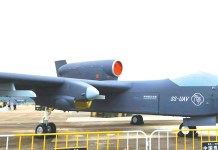Even as nuclear-armed neighbors India and China have started withdrawing their troops from the highly-contested Eastern Ladakh border, experts believe it was the result of Beijing not having an answer to the Indian Army’s capture of key heights, including the Kailash Hills.
China’s PLA Pulls Back 200 Tanks; 100 Heavy Vehicles Return From Ladakh Friction Points — Reports
Following a months-long standoff on the disputed border, the two countries began to pull back troops and battle tanks from the Pangong Tso area in Eastern Ladakh on Thursday.
The decision to disengage was based on the consensus reached during the ninth round of corps commander-level meeting, according to reports.
Both New Delhi and Beijing had undertaken heavy deployment of troops and armored units along the Line of Actual Control (LAC), the de facto border, since the stand-off started in May last year.
Has The Indian Army Captured ‘Pious’ Mount Kailash From China?
In June, the situation escalated following a deadly clash between the two armies in the Galwan Valley, resulting in the deaths of 20 Indian soldiers.
The new agreement is aimed at ending the deadlock at the border. However, according to military experts, the turnaround is the result of New Delhi achieving a significant military advantage.
Harsh V Pant, a strategic affairs expert and a professor at King’s College, London, says that while China had shown its resolve by not moving the positions of its troops for almost a year, the Indian Army’s success in holding strategic heights pushed them to take a step back.
China did so because the Indian Army has taken up positions on the high hills around eastern Ladakh and the Kailash hills, he said.
“China was also having trouble taking the Indian front on the high hills as it was becoming very difficult to adapt the army to the geographical conditions and weather of the region. It’s not easy to stay in this situation for very long, so they were forced to step back,” Pant told BBC.
According to the agreement, the Chinese People’s Liberation Army (PLA) will be moving their troops to Finger 8 (mountainous spur) while the Indian Army would move back to Finger 3 – Dhan Singh Thapa base, leading to the restoration of the status quo.
Moreover, it has also been agreed that there will be no patrolling in the area between Finger 3 and 8.
#WATCH: Indian Army video of ongoing disengagement process in Ladakh. pic.twitter.com/kXjr0SiPN2
— ANI (@ANI) February 11, 2021
The agreement to withdraw from Pangong Tso, a glacial lake at 14,000 ft (4,270 meters), was announced by India’s Defence Minister Rajnath Singh in Parliament on February 12.
“Our sustained talks with China have led to an agreement on disengagement on the north and south banks of the Pangong lake,” he said.
New Delhi, however, said it would be monitoring the disengagement process. Reports suggest that India will choose to vacate the strategic heights if there is an equal commitment from the Chinese side to disengagement at other friction points as well.
According to another analyst, the satellite imagery has shown that the Chinese PLA has retreated more than 10 kilometers in the region.
Security expert Sameer Patil, however, believes the Chinese side will have the opposite narrative. He told Business Insider India that Beijing might say “it was not a unilateral disengagement”. “The Chinese will sell it as ‘we forced India to withdraw, and because it was supposed to be a mutual process, we also agreed to withdraw from some areas.”
Follow EurAsian Times on Google News




